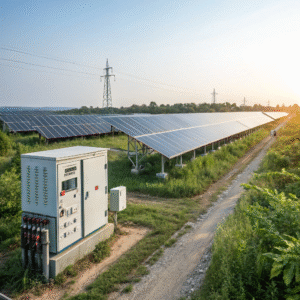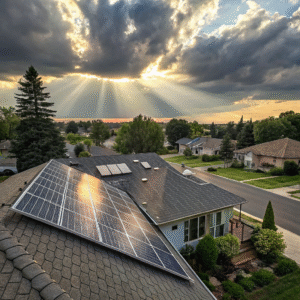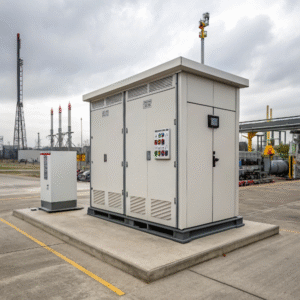What is an outdoor battery system? What role does it play in a PV storage system?
by
What is an outdoor battery system? What role does it play in a PV storage system?
Ever wondered how solar energy can power your home even after sunset? The answer lies in outdoor battery systems—the silent heroes of renewable energy.
An outdoor battery system stores excess solar energy generated by PV panels, allowing use during non-sunny hours, stabilizing grid supply, and enhancing energy self-sufficiency.
Outdoor battery systems are revolutionizing how we harness solar power. Let’s dive deeper into how they work, withstand harsh weather, and ensure safety.
How do outdoor PV storage batteries "store" solar energy?
Have you ever asked yourself where extra solar power goes when the sun is shining too bright?
Outdoor PV storage batteries store solar energy through electrochemical reactions, converting DC electricity into chemical energy during charging, and reversing the process during discharge for later use.
The Science Behind Energy Storage
-
Charging Phase
- Solar panels generate DC electricity.
- The charge controller regulates voltage to prevent overcharging.
- Batteries store energy via chemical reactions (e.g., lithium-ion cells).
-
Discharging Phase
- Inverters convert stored DC to AC for household use.
- During peak demand or at night, stored energy powers appliances.
| Key Component | Function |
|---|---|
| Battery Cells | Store energy electrochemically |
| Inverter | Converts DC to AC for home use |
| Charge Controller | Protects battery from overcharging |
Efficiency & Depth of Discharge (DoD)
- Li-Ion Batteries: 90% efficiency, 80-90% DoD.
- Lead-Acid: 70-80% efficiency, 50% DoD.
Storing excess solar energy reduces grid dependency and maximizes renewable utilization.
How do outdoor battery systems cope with severe weather such as high temperature, low temperature, and rain?
What happens when your battery faces scorching heat or freezing rain?
Outdoor battery systems use weatherproof enclosures, thermal management, and IP ratings to withstand extreme temperatures (-20°C to 50°C) and heavy rain (IP65 or higher).
Weather Resistance Features
1. High Temperature Resilience
- Active cooling (fans/liquid cooling) prevents overheating.
- Heat-resistant materials avoid thermal runaway.
2. Low Temperature Performance
- Built-in heating elements maintain optimal charge efficiency.
- Lithium-ion performs better than lead-acid in cold climates.
3. Water & Dust Protection
- IP65/IP67 ratings ensure resistance to heavy rain and dust.
- Sealed enclosures prevent moisture ingress.
Tip: Always check the manufacturer’s temperature and IP ratings before installation.
Can an energy storage battery explode or catch fire? How does it ensure safety?
News of battery fires might make you nervous—so how do modern batteries stay safe?
Outdoor battery systems use advanced BMS (Battery Management Systems), flame-retardant materials, and fail-safe mechanisms to prevent explosions or fires, even under stress.
Safety Mechanisms Explained
1. Battery Management System (BMS)
- Monitors voltage, current, and temperature.
- Disconnects in case of short circuits or overheating.
2. Structural Safety
- Thermal Runaway Prevention: Separator shutdown at high temps.
- Flame Retardant Casings: Self-extinguishing materials.
3. Certifications Matter
- Look for UL9540, IEC62619, or UN38.3 certifications.
Real-World Safety: Tesla Powerwall uses multiple protection layers, including gas venting in emergencies.
Conclusion
Outdoor battery systems store solar energy efficiently, endure harsh weather, and prioritize safety—making renewable energy reliable day and night.
Choose the right battery system to maximize solar savings and sustainability.



